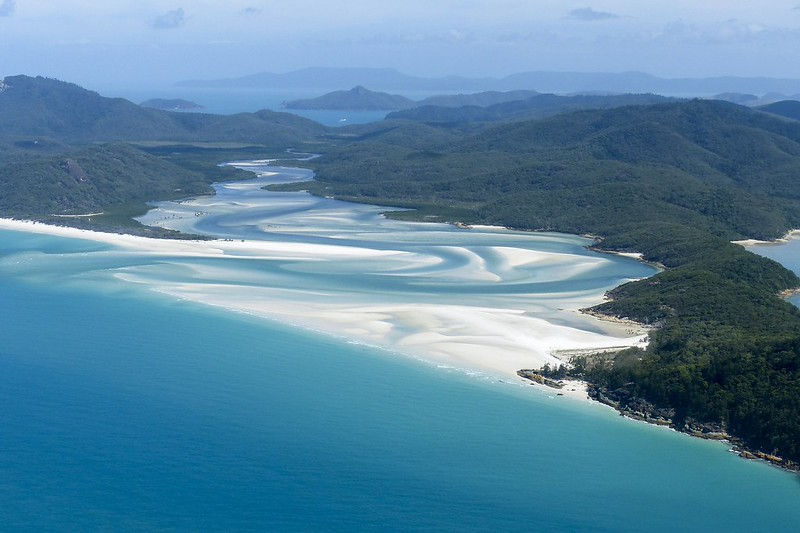Australia’s ‘Saddening’ Contribution to Global Warming
- May 4, 2019
- 4 min read
Updated: May 6, 2019
With about one million different native species Australia is a land like no other. Australia is home to some of the most unique and magnificent flora and fauna in the world with vast grasslands, tropical rainforests, eucalypt forests and diverse woodlands that provide shelter to our most precious threatened species. Among them the well known kangaroo, koala, echidna, dingo, platypus, wallaby and wombat.
The geographic isolation has meant that much of Australia’s flora and fauna is very different from species in other parts of the world with most not found anywhere else. Australia separated from Antarctica 50 million years ago. As it drifted away from the southern polar region, the climate became warmer and drier. New species of plants and animals evolved to dominate the landscape.
Yet - sadly and disappointing - there is another side to Australia today…what about Climate Change? Global Warming? Deforestation? Pollution?
Australia has one of the highest per capita emissions of carbon dioxide in the world, with 0.3 percent of the world’s population it produces 1.3 per cent of the world’s greenhouse gases.

Unfortunately the Australian Government still ignores the scientific facts of Climate Change.
Australia is vulnerable to the effects of global warming projected for the next 50 to 100 years because of the extensive arid and semi-arid areas, an already warm climate, high annual rainfall variability and existing pressures on water supply.
Yet, amongst the top countries in the world - developed and developing - Australia ranks in the top 15 (e.g. http://www.globalforestwatch.org/countries/overview) for broad-scale land clearing – killing tens of millions of native animals (including threatened species) and wiping out endangered forests and woodlands. Urbanization, mining, fires, logging and agricultural activities are few of the causes of deforestation. Historically, Australia has one of the highest rates of tree clearing of any developed country. Currently 1,000 animal and plant species are at risk of extinction, including the Koala.

The impact of deforestation in Australia on the environment and ecosystems includes loss of biodiversity, a changing climate and decline in soil fertility. Almost 40 percent of the forests are lost and some of the remaining forests are fragmented - sadly the deforestation continues in the name of profit. The forgotten facts: Trees make rain and forest floors store water!
With an abundance of rhetoric, but manifestly inadequate lack of an integrated, effective federal program, both sides of politics in Australia have failed the flora and fauna of this Great Southern Land. For more information about endangered species in Australia:
Another one of the many big problems for future generations will be the scarcity of water sources in Australia as the country is “water poor”. Australia is the driest inhabited continent on earth and among the world’s highest consumers of water. Groundwater is extensively used right across the Australian continent. The Great Artesian Basin (GAB - one of the largest underground freshwater reservoirs in the world), underlying about 1.7 million square kilometres of Australia, contains about 65,000 km3 of water, the water is up to 2 million years old, but sadly it appears far to easy to extract this resource faster than it is being replenished.
Available freshwater resources are expected to decline with changes to rainfall patterns accompanying global climate change.
Electricity production in Australia is still dominated by coal-fired power stations, which contribute one third of it’s net greenhouse gas emissions. An extreme force of development of the renewables sector with government incentives and innovation is urgently required before any significant level of substitution of coal-fired power can take place and be ultimately phased out.
Far from being a solely environmental imperative, renewable energy makes economic sense. From rooftop solar to large-scale installations, projects are ramping up all over the country. Imagine what we could achieve with greater government support! An often-overlooked double-dividend results from this trend as well: renewable energy job creation massively exceeds jobs resulting from mining operations, such as coal (New York Times, 2017) where automation has made many roles redundant.
With storage technologies from companies such as Tesla proving effective and affordable, the sky is the limit.


The following statement in an article from “News.com.au” from September 2018 nails it to the point:
AUSTRALIA, you’re being “irresponsible to the extreme”
That’s the harsh message from leading scientists across the country, not just for our “confused, divided and backwards” government but for the everyday Aussies who believe climate change scepticism and refuse to acknowledge the state of “emergency” we face.
Scientists have slammed the federal government for its “deliberate negligent failure” to take action to reduce Australia’s greenhouse gas emissions over the last few years.
For us humans, every aspect of our life is reliant on the natural environment including the food we eat, the air we breathe, the water we drink, the clothes we wear and the products that are made and sold to create jobs and drive the economy.
Within Australia, the effects of global warming vary from region to region, but the impacts are already being felt across all areas of Australian life with extreme droughts, heatwaves, floods, bushfires, and these will continue to worsen if we do not act now to limit global warming to 1.5°C.

REFERENCE
Enviroblog.net
News.com.au, Sep 2018 Stephanie Bedo (viewed 04.05.2019)
World Wide Flora & Fauna - Australia (viewed 04.05.2019)






Comments